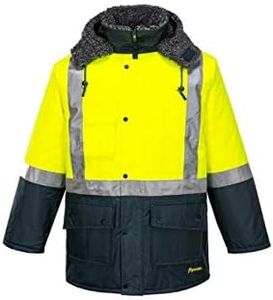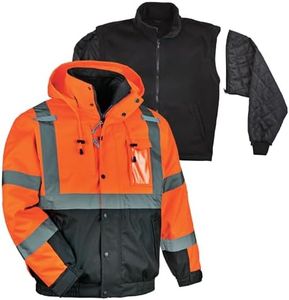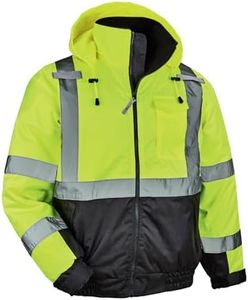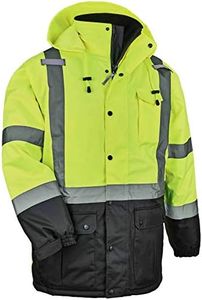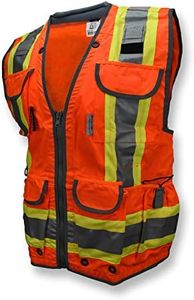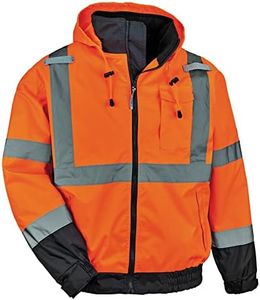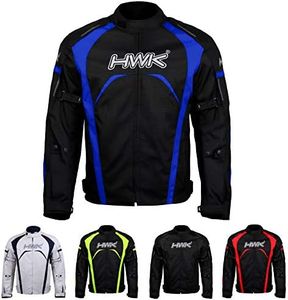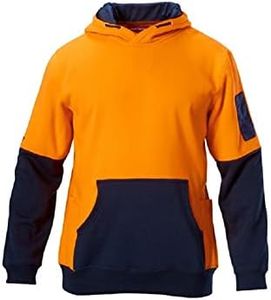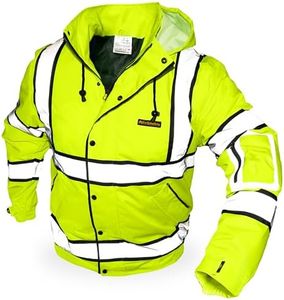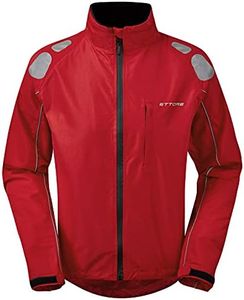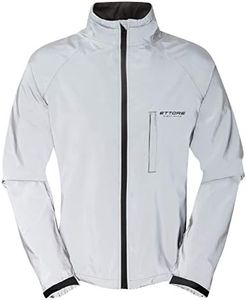We Use CookiesWe use cookies to enhance the security, performance,
functionality and for analytical and promotional activities. By continuing to browse this site you
are agreeing to our privacy policy
10 Best High Visibility Jackets
From leading brands and best sellers available on the web.Buying Guide for the Best High Visibility Jackets
Choosing the right high-visibility jacket is about matching your safety needs with the features that best suit your work environment and comfort preferences. These jackets help ensure that you remain easily seen in various conditions, which is especially crucial if you work near vehicles, in low-light areas, or outdoors where weather can affect visibility. Understanding the key specs will help you pick a jacket that provides enough visibility and comfort for your specific activities.Visibility RatingThe visibility rating describes how easily the jacket can be seen, typically determined by the amount and placement of fluorescent fabric and reflective tape. This is important because it directly affects how well you can be seen, especially in low light or at night. You’ll generally find jackets rated as basic visibility, enhanced visibility, and high visibility. For work near traffic or heavy machinery, high visibility (often meeting certain safety standards) is best. For lighter outdoor activities like cycling or jogging, enhanced or basic visibility may suffice.
ColorHigh-visibility jackets come in bright colors such as fluorescent yellow, orange, and green. The color improves how much the jacket stands out during the day. Yellow and orange are most common and are preferred for use on roadways or construction sites where being seen from a distance is essential. When deciding, consider the environment you’ll be in; choose the color that most contrasts with your surroundings for maximum impact.
Reflective TapeReflective tape is added to jackets to reflect light back towards its source, making the wearer more visible at night or in poor weather. The size, pattern, and placement of this tape all affect visibility; more tape and tape around key areas like the torso and arms increase overall safety. If you’ll be working mostly in darkness or near vehicle headlights, opt for jackets with large, strategically placed reflective strips.
Weather ProtectionSince high-visibility jackets are often worn outdoors, weather protection is critical. Jackets range from lightweight, breathable options to insulated, waterproof types. Consider conditions you’ll face: for cold or rainy climates, pick jackets with waterproof fabrics and insulation; for warm weather or indoor use, breathable and lighter options are more comfortable and prevent overheating.
Fit and ComfortA good fit ensures the jacket doesn’t restrict movement but isn’t so loose it gets caught on things. Some jackets are designed to fit over regular clothes, while others are meant to be worn alone. If you need to move freely or wear the jacket for long hours, choose an ergonomic design with adjustable features like cuffs and waistbands. Test for comfort to avoid chafing or bulkiness.
Pockets and AccessibilityPockets add convenience, allowing you to keep necessary small items close at hand. Number, size, and placement of pockets vary between jackets. If your job involves carrying tools or devices, ensure the jacket has enough secure and accessible pockets to meet your needs. For occasional or light use, simpler jackets with fewer pockets may suffice.
BreathabilityBreathability means how well the jacket lets moisture and heat escape, keeping you comfortable, especially during physical activity. Some jackets use mesh linings or vented panels for better airflow. If you’ll be active or work in warmer conditions, prioritize options with higher breathability to stay cool and prevent sweating. In colder conditions, breathability is less important than insulation.
